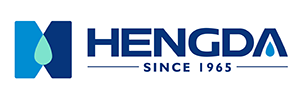Adhesion Promotion on Inorganic and Organic Substrates
An adhesion promoter is a bi-functional compound that can chemically react with both the substrate and the adhesive. Known for increasing an adhesive’s bond strength, it can be applied in two ways: by being mixed with the adhesive or applied directly to the substrate. Unlike priming systems, adhesion promoters are generally applied at thinner film thicknesses. An adhesion promoter’s effectiveness depends on both the substrate and the adhesive being used. Surface pretreatments, such as solvent cleaning or mechanical etching, can be used with adhesion promoters as part of a pretreatment method.
Adhesion Promoters for Metal and High-Surface-Energy Inorganic Substrates
The most common commercial adhesion promoter is based around silane coupling agents. Silanes are most often used to promote the adhesion between polymeric systems and inorganic substrates.
Silane promoters typically comprise a tetravalent Si core (which has an organo functional tail) and some form of hydrolyzable group, such as a chloro or alkoxy attached. When applied to the substrate surface, the silane is hydrolyzed to form a silanol, which condenses and polymerizes with itself to form an extended network. If the silanol is on a substrate with sufficient oxide functionality, cross coupling can take place, anchoring the polymerized silanol to the surface The choice of organofunctional tail on the silane is dictated by the adhesive class that is being used (e.g., for an epoxy adhesive system, a tail containing an amino or epoxy moiety would be suitable).
The effectiveness of silanes depends on the substrate being used; smooth, high-surface-energy substrates are better than low-surface-energy or discontinuous substrates
Titanate and zirconate coupling agents are growing in popularity. They are predominately used to improve filler polymer adhesion in composites. Both titanates and zirconates react similarly to silane coupling agents by way of condensation to surface hydroxyl groups; however, unlike silanes, there is not condensation polymerization to produce a network at the interface
Adhesion Promoters for Organic and Low-Surface-Energy Inorganic Substrates
Low-surface-energy and solvent and chemical inertness all make organic materials difficult to bond. The lack of “surface chemistry” (such as hydroxyl) on most organic substrates renders silane adhesion promoters ineffective. Recently, Oxford Advanced Surfaces developed Onto®, a novel class of adhesion promoters for use on organic and low-surface-energy inorganic substrates.
Adhesion promoters conceptually resemble those based around a silane – a functional tail covalently linked to a reactive head. The reactive head in the Onto adhesion promoter is based around a latent reactive intermediate, a class of organic functionality, which, upon application of an external stimulus, converts from a stable state to a highly reactive radical intermediate. This radical intermediate is capable of reacting with C-H, O-H and N-H bonds, as well as C = C and C ≡ C bonds
Summary
Adhesion promotion is a powerful technique for increasing the strength of adhesive bonds. Adhesion-promoting systems should be chosen based on the chemical nature of the substrate. For example, for high-surface-energy metal/inorganic, choose silanes, titanates or zirconates; for low-surface-energy organic substrates, an Onto system is appropriate.




Leave a Reply
Want to join the discussion?Feel free to contribute!